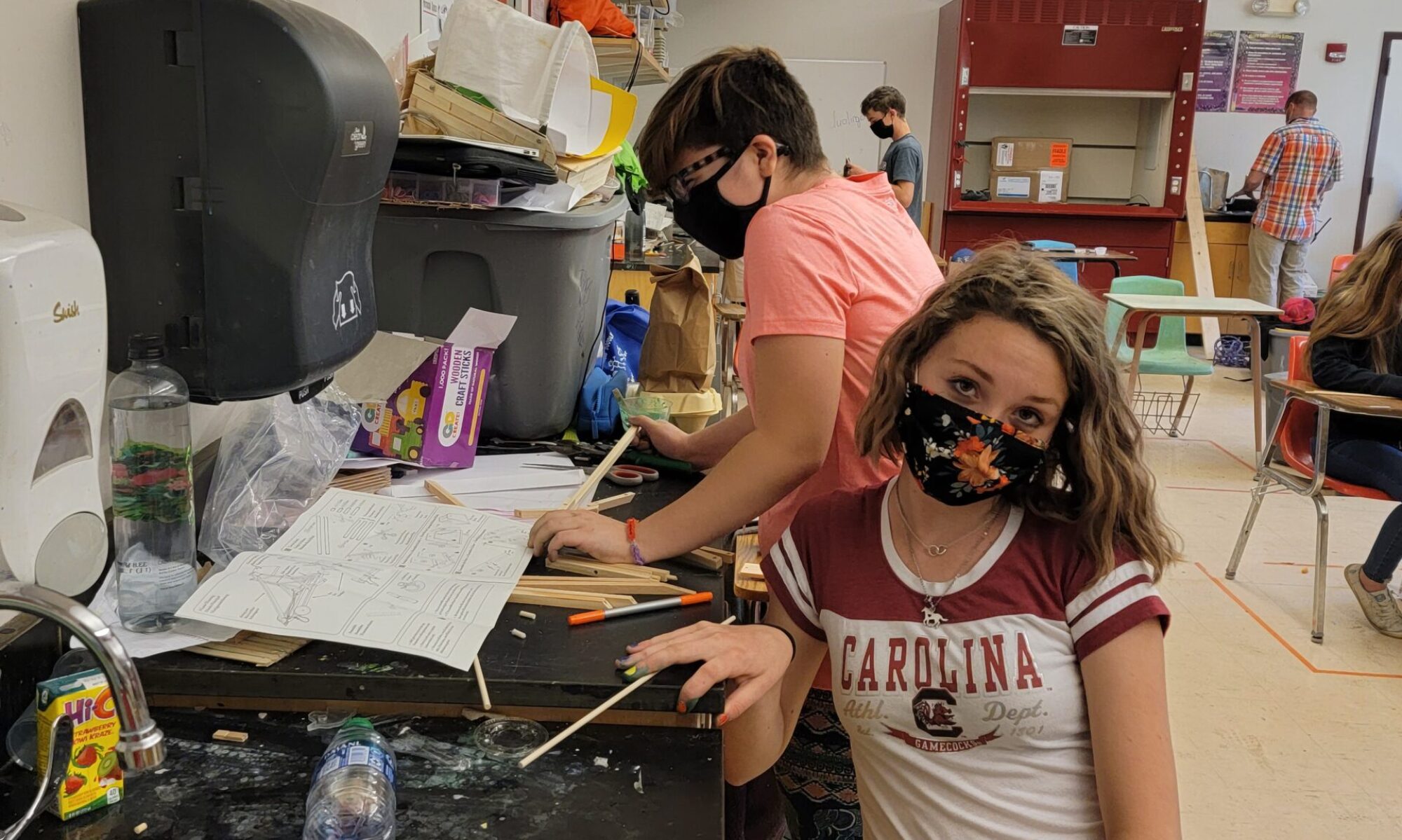During this COVID-19 crisis, we as adult educators, are collectively mourning the loss of our everyday routines and face-to-face interactions. And students are too.
As educators, we know that routines are important, and so is face-to-face connection. Meaningful connection with other humans is critical to a young adolescent’s health and well-being. Right now more than ever, we need to provide students with those regular connection routines. And as we make use of video conferencing to connect with students, here’s how to maximize our human connection: virtual morning meetings.
Virtual morning meetings are essential
In Southern Vermont, as soon as schools closed, sixth grade teacher Robin Bebo-Long instantly went virtual with her morning meetings. Every day of the school week, she gathers with her students from Cavendish Town School on a Zoom call. It begins each morning at 8:50 am. And Robin greets each student by name as they join the call.
In Northern Vermont, Jared Bailey joined with his teaching team in getting virtual morning meetings up and running. Every day, Jared spends time with his 21 fifth- and sixth-graders via Google Meet. And he too, greets students as they join the call before its 9 am start time.
Virtual morning meetings help preserve and strengthen relationships
Jared says,
“At this time, we have had such an abrupt disruption in schooling, and we have to focus on what is essential for students – to see their teacher’s face and hear their voice. Those relationships come first, and that we see that our students’ emotions are healthy.”
While so much in students’ lives has changed, it must be comforting to these young adolescents to see both their peers and their educators each morning.
What are the elements of a powerful virtual morning meeting?
Robin and Jared are masters of facilitating the virtual morning meeting. Each of them loosely follows the same structure (which is incidentally pretty similar to the one I proposed in Host your morning meeting from home). It’s a structure that encourages students to connect, share and build relationships; it could follow this simple format.
1. The Greeting
As mentioned, Robin and Jared greet every student by name, every morning. Each of them greeted students by name as they entered the call. “Good Morning, Lydia…. Good Morning, Neko….”
What does it feel like when you hear your name spoken by a familiar and expected voice? Does it help soothe any anxiety you feel?
2. Daily News or Announcement
If the teacher is the leader of Morning Meeting, then he or she gives some updates and news briefs about the day.
In one session I sat in on, Jared told the students, “Today you have a virtual ELA session at 10:30 am, and a Math virtual session at 1 pm. I know that the art teacher sent out a link to you about some art resources, and there is a time tomorrow for you to pick up Spanish packets at school”.
Try to behave like the central hub of communication for kids on that day. Centralize the information they need for the day. Try to organize it for them. Repeat it to them so they have your voice as a touchstone. There is a lot coming at students in their email in-boxes every day, and many students need someone to assimilate that information for them. If you think it’s helpful, you can use visual news or reminders.
3. Sharing
Next, open up a prompt for people to think about and share.
I’ve seen that done well as a prompt *combined* with the greeting. Jared did this in the session I attended. “Please say good morning to us and share with the class what book you are currently reading”. That sharing creates a set of student-contributed resources for other students to consider. It creates community.
I attended one of Robin’s virtual morning meetings on a Monday. So she asked students to reflect on their weekend activities, utilizing a protocol called Roses and Thorns: “Share with us a high from this past weekend and a low.”
Using that protocol is clever, as it captures the reality that many students are going to struggle with weekends, as well as finding joy. It opens the door, on one hand, for students to look for joy in their lives. At the same time, it invites them to share a place where as the morning meeting leader, you might want to check in and ask a student if they need additional support.
4. Game or Activity
Last, the leader can choose some sort of short activity or game.
Robin shared an activity her class loved: “Find a MEME that shows how you’re feeling!” Again she created that space where her students could invite themselves to share joy or positivity but also open the door to asking for additional support. Meanwhile, for his activity, Jared had the class contribute to a Flipgrid where each student shared a joke.
A note of caution about virtual morning meetings:
So many of us are learning a “new normal”, and video-conferencing has taken the place of the handshake. We are quickly learning the benefits and drawbacks of video tools. Some of the positives: students seeing familiar faces, and hearing familiar voices. The power to provide in-time, synchronous support to students.
And the drawbacks: privacy & security
Security and privacy are real concerns, so choose your tools wisely. Whether you are using Google Hangouts, Meet, Zoom, or some other platform, teachers should take precautions to keep virtual spaces safe. For instance, do you know how to keep students from joining or rejoining a Meet without you?
(Speaking of Meet, they just recently added the ability for teachers to run Google Meets from within their Google Classroom platform. Learn more about that here.)
Now, in some ways, video conferencing can be a great equalizer. But they can also unearth certain inequities. You may be joining the call from your (second) beautiful, sunny solarium with high ceilings, while I am sharing myself from the messy closet of a bedroom that I share with two siblings.
If you use a Zoom call, you can allow your students to change their backgrounds. Microsoft Teams allows users to change their background as well, or simply blur it out. These features allow students to show their own clear faces, but not show a less than ideal backdrop. Teachers might even choose to ask all students to hide backdrops, so that everyone can focus on the person, not the setting.
Additionally, some students may simply not feel comfortable enough with their appearance (or surroundings, or the technology) to participate in video-conferencing either regularly or in a particularly challenging moment. In these cases, what’s your backup plan?
Morning Meeting, meet Advisory
While I have been writing about the Morning Meeting, I want to acknowledge its intwinement with advisory.
Often, an effective advisory structure uses morning meetings on all or most days. Morning meetings can take place across many learning settings, hence my dependence on the term “morning meeting” instead of advisory.
We need Morning Meeting now more than ever
Now back to our program…
For me, there are two main outcomes that make Virtual Morning Meeting so essential.
For one, it’s important that students have this opportunity for connection with peers. I observed both Jared and Robin artfully manage their meetings while still keeping it focused on the students and their voices. Some students might make animal sounds, and the chat window might be fluttering. As much as possible, let the meeting be about their authentic student voices.
The second piece that I noted is that a Virtual Morning Meeting provides this critical window of observation for the teacher. The teacher gets a quick glimpse of each student and hears the tone of their voices. That’s really important data for educators while we attempt to run school remotely.
Speaking of data…
Williston Central School asked parents and students to give administrators and teachers feedback about the remote learning so far. Not surprisingly, Jared and his team received clear and positive reactions about the importance of the virtual Morning Meeting. Here are what some of his parents had to say:
- “Keeping the daily meeting with her core teacher has been AMAZING! Her whole class was in attendance again today – so pivotal to their happiness!”
- “… the Google Meets in the morning, right from the get go, have been the glue holding this House together.”
Now more than ever, we need educators to create very intentional spaces for our students to connect with their peers and their teachers.
Please tell me if you are using a virtual morning meeting with your students. What is working? How’s it going? I’d love to hear from you.
More Ideas for Morning Meeting Activities
- Google Meet Advisory Games from Williston Central School
- Developmental Designs List



thanks for post.